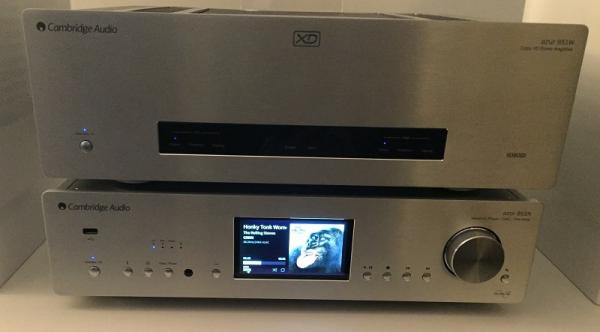Cambridge Audio’s Azur Launches Music Into the Sonic Stratosphere
The 851N is as easy on the eyes as it is on the ears, with a thick brushed aluminum front panel offered in black and silver finishes and dual layer damped feet for enhanced resonance control. A bright, 4.3-inch color display offers easy viewing and browsing of album art, track info and configuration menus.
Sonically the player is ready to stream the highest of quality signals to your system, decoding ALAC, WAV, FLAC, AIFF, WMA, MP3, AAC, HE AAC, AAC+, and OGG Vorbis at resolutions up to 24-bit/192kHz. A USB Type B connection offers an asynchronous connection to a computer. The twin Analog Devices AD1955 24-bit DACs used in “dual differential” mode upsamples all incoming audio signals to 24-bit/384kHz output and an oversized, audiophile grade toroidal transformer delivers the highest quality sound.
The Azur is loaded on the connections front, able to serve as a high-end pre-amp by offering multiple digital inputs including AES/EBU, two S/PDIF coaxial and two Toslink optical. Outputs include balanced XLR and unbalanced RCA analog and AES/EBU, coaxial and Toslink optical digital. Three additional USBs allow for connection of a Wi-Fi dongle or local storage. Whether connected via Wi-Fi or Ethernet, Azur supports Spotify Connect, 20,000 Internet radio stations, Airplay and UPnP for accessing local media.
A rear panel IR input offers easy connection to basic control systems, while an RS-232 connection supports additional automation systems. Of course, the easiest way to browse and select music is via the free Cambridge Connect App for iOS and Android. The Azur 851N will begin shipping in February for $1799. The 851N is pictured with the Azur 851W power amplifier.









































